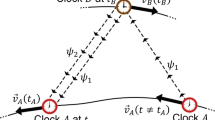Abstract
The current popular GNSS RTK technique would be not applicable on ocean due to the limited communication access for transmitting differential corrections. A new technique is proposed for high-precision ocean RTK, referred to as ORTK, where the corrections are transmitted by employing the function of BeiDou satellite short-message communication (SMC). To overcome the limitation of narrow bandwidth of BeiDou SMC, a new strategy of simplifying and encoding corrections is proposed instead of standard differential corrections, which reduces the single-epoch corrections from more than 1000 to less than 300 bytes. To solve the problems of correction delays, cycle slips, blunders and abnormal epochs over ultra-long baseline ORTK, a series of powerful algorithms were designed at the user-end software for achieving the stable and precise kinematic solutions on far ocean applications. The results from two long baselines of 240 and 420 km and real ocean experiments reveal that the kinematic solutions with horizontal accuracy of 5 cm and vertical accuracy of better than 15 cm are achievable by convergence time of 3–10 min. Compared to commercial ocean PPP with satellite telecommunication, ORTK is of much cheaper expense, higher accuracy and shorter convergence. It will be very prospective in many location-based ocean services.











Similar content being viewed by others
References
Alkan RM, Öcalan T (2013) Usability of the GPS precise point positioning technique in marine applications. J Navig 66(4):579–588
Baarda W (1968) A testing procedure for use in geodetic networks. Publications on geodesy. Tech. Rep., vol 2, no. 5, Netherlands Geodetic Commission, Delft
BD Standard (2015) Performance requirements and test methods for BDS RDSS unit
BeiDou (2013) BeiDou Navigation Satellite System public service performance specification V1.0. Chinese Navigation Satellite System Administration Office
Blewitt G (1990) An automatic editing algorithm for GPS data. Geophys Res Lett 17(3):199–202
Brown N, Geisler I, Troyer L (2006) RTK the rover performance using the master–auxiliary concept. Positioning 5(1–2):135–144
Chassagne O (2012) The future of satellite navigation: one-centimeter accuracy with PPP. Inside GNSS, pp 49–54
Collins JP, Langley RB (1997) A tropospheric delay model for the user of the wide area augmentation system. Tech. Rep. No. 187, Department of Geodesy and Geomatics Engineering, University of New Brunswick
Dixon K (2006) StarFire: a global SBAS for sub-decimeter precise point positioning. ION GNSS 2006 Fort Worth, pp 26–29
Dodson A, Shardlow P, Hubbard L, Elgered G, Jarlemark P (1996) Wet tropospheric effects on precise relative GPS height determination. J Geod 70:188–202
Elsobeiey M, Al-Harbi S (2015) Performance of real-time precise point positioning using IGS real-time service. GPS Solut 20:565–571
Feng Y, Li B (2008) A benefit of multiple carrier GNSS signals:regional scale network-based RTK with doubled interstation distances. J Spat Sci 53:135–147
Fotopoulos G, Cannon ME (2001) An overview of multi-reference station methods for cm-level positioning. GPS Solut 4(3):1–10
Ge M, Gendt G, Dick G, Zhang F (2005) Improving carrier-phase ambiguity resolution in global GPS network solutions. J Geod 79:103–110
Ge M, Gendt G, Rothacher MA, Shi C, Liu J (2008) Resolution of GPS carrier-phase ambiguities in precise point positioning (PPP) with daily observations. J Geod 82(7):389–399
Geng J, Teferle FN, Meng X, Dodson AH (2010) Kinematic precise point positioning at remote marine platforms. GPS Solut 14(4):343–350
Geng J, Shi C, Ge M, Dodson AH, Lou L, Zhao Q, Liu J (2012) Improving the estimation of fractional-cycle biases for ambiguity resolution in precise point positioning. J Geod 86(8):579–589
Gumus K (2016) A research on the effect of different measuring configurations in network RTK applications. Measurement 78:334–343
Knight NL, Wang J, Rizos C (2010) Generalised measures of reliability for multiple outliers. J Geod 84(10):625–635
Kouba J, Héroux P (2001) Precise point positioning using IGS orbit and clock products. GPS Solut 5(2):12–28
Lacarra E, Vázquez J, Sánchez MA, Bonacasa L, Horváth T (2015) EDAS (EGNOS Data Access Service): alternative source of differential GPS corrections for maritime users. ION GNSS+2015. Tampa, FL, pp 953–966
Leick A, Rapoport L, Tatarnikov M (2015) GPS satellite surveying, 4th edn. Wiley, New York
Li B (2016) Stochastic modeling of triple-frequency BeiDou signals: estimation, assessment and impact analysis. J Geod 90:593–610
Li B, Shen Y, Xu P (2008) Assessment of stochastic models for GPS measurements with different types of receivers. Chin Sci Bull 53:3219–3225
Li B, Feng Y, Shen Y, Wang C (2010) Geometry-specified troposphere decorrelation for subcentimeter real-time kinematic solutions over long baselines. J Geophys Res 115:B11404
Li B, Shen Y, Lou L (2011) Efficient estimation of variance and covariance components: a case study for GPS stochastic model evaluation. IEEE Trans Geosci Remote Sens 49(1):203–210
Li B, Shen Y, Feng Y, Gao W, Yang L (2014) GNSS ambiguity resolution with controllable failure rate for long baseline network RTK. J Geod 88(2):99–112
Li B, Feng Y, Gao W, Li Z (2015) Real-time kinematic positioning over long baselines using triple-frequency BeiDou signals. IEEE Trans Aerosp Electr Syst 51(4):3254–3269
Li B, Li Z, Zhang Z, Tan Y (2017) ERTK: extra-wide-lane RTK of triple-frequency GNSS signals. J Geod 91:1031–1047
Liang Z, Lv H, Wang D, Hou Y, Wu J (2015) Asynchronous RTK precise DGNSS positioning method for deriving a low-latency high-rate output. J Geod 89(7):641–653
Melbourne W (1985) The case for ranging in GPS-based geodetic systems. In: First international symposium on precise positioning with the global positioning system, Rockville, pp 373–386
Mervart L, Beutler G, Rothacher M, Wild U (1994) Ambiguity resolution strategies using the results of the International GPS Geodynamics Service (IGS). J Geod 68:29–38
Niell AE (1996) Global mapping functions for the atmosphere delay at radio wavelengths. J Geophys Res Solid Earth 101(B2):3227–3246
Odolinski R, Teunissen PJG, Odijk D (2015) Combined GPS + BDS for short to long baseline RTK positioning. Meas Sci Technol 26(4):045801
Takac F, Zelzer O (2008) The relationship between network RTK solutions MAC, VRS, PRS, FKP and i-MAX. ION GNSS 2008. Savannah, GA, pp 348–355
Teunissen PJG (2006) Testing theory: an introduction, 2nd edn. Delft University Press, Delft
Teunissen PJG, Amiri-Simkooei AR (2008) Least-squares variance component estimation. J Geod 82:65–82
Tralli D, Lichten S (1990) Stochastic estimation of tropospheric path delays in Global Positioning System geodetic measurements. Bull Geod 64:127–159
Verhagen S, Li B, Teunissen PJG (2013) Ps-LAMBDA: ambiguity success rate evaluation software for interferometric applications. Comput Geosci 54:361–376
Vollath U, Landau H, Chen X, Doucet K, Pagels C (2002) Network RTK versus single base RTK—understanding the error characteristics. ION GPS 2002, Portland OR, pp 2774–2781
Wang J (1999) Stochastic modeling for RTK GPS/GLONASS positioning. J Inst Navig 46(4):297–305
Wang M, Li B (2016) Evaluation of empirical tropospheric models using satellite-tracking tropospheric wet delays with water vapor radiometer at Tongji, China. Sensors 16(2):186. https://doi.org/10.3390/s16020186
Wang C, Feng Y, Higgins M, Cowie B (2010) Assessment of commercial network RTK user positioning performance over long inter-station distances. J Glob Position Syst 9(1):78–89
Wang H, Ou J, Yuan Y (2011) Strategy of data processing for GPS rover and reference receivers using different sampling rates. IEEE Trans Geosci Remote Sens 49(3):1144–1149
Wanninger L (1997) Virtual reference stations (VRS). GPS Solut 7(2):143–144
Wanninger L (2002) Virtual reference stations for centimeter-level kinematic positioning. ION GPS 2002 Portland, OR, pp 1400–1407
Wübbena G (1985) Software developments for geodetic positioning with GPS using TI-4100 code and carrier measurements. In: First international symposium on precise positioning with the global positioning system, Rockville, pp 403–412
Yang L, Wang J, Knight NL, Shen Y (2013) Outlier separability analysis with a multiple alternative hypotheses test. J Geod 87(6):591–604
Zhang J, Lachapelle G (2001) Precise estimation of residual tropospheric delays using a regional GPS network for real-time kinematic applications. J Geod 75:255–266
Zhou Z, Li B, Shen Y (2013) A window-recursive approach for GNSS kinematic navigation using pseudorange and Doppler measurements. J Navig 66(2):295–313
Zou X, Ge M, Tang W, Shi C, Liu J (2013) URTK: undifferenced network RTK positioning. GPS Solut 17(3):283–293
Zumberge JF, Heflin MB, Jefferson DC, Watkins MM, Webb FH (1997) Precise point positioning for the efficient and robust analysis of GPS data from large networks. J Geophys Res Solid Earth 102(B3):5005–5017
Acknowledgements
This study is sponsored by National Natural Science Foundation of China (41574023, 41622401 and 41374031), The Scientific and Technological Innovation Plan from Shanghai Science and Technology Committee (17511109501, 17DZ1100802 and 17DZ1100902), The National Key Research and Development Program of China (2016YFB0501802), and the Fundamental Research Funds for the Central Universities.
Author information
Authors and Affiliations
Corresponding author
Rights and permissions
About this article
Cite this article
Li, B., Zhang, Z., Zang, N. et al. High-precision GNSS ocean positioning with BeiDou short-message communication. J Geod 93, 125–139 (2019). https://doi.org/10.1007/s00190-018-1145-z
Received:
Accepted:
Published:
Issue Date:
DOI: https://doi.org/10.1007/s00190-018-1145-z




